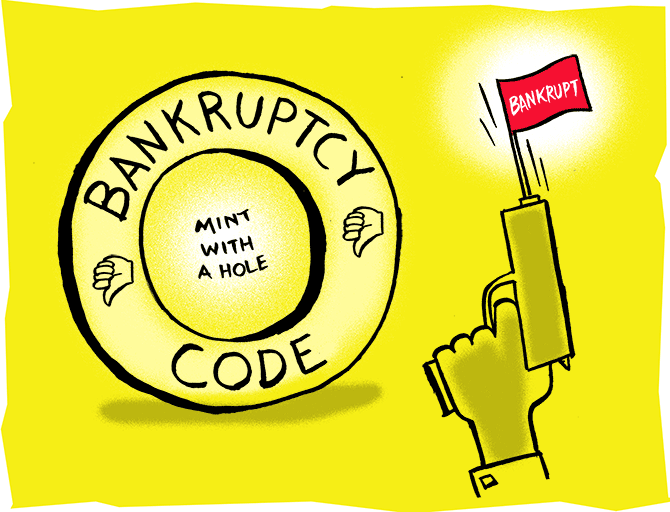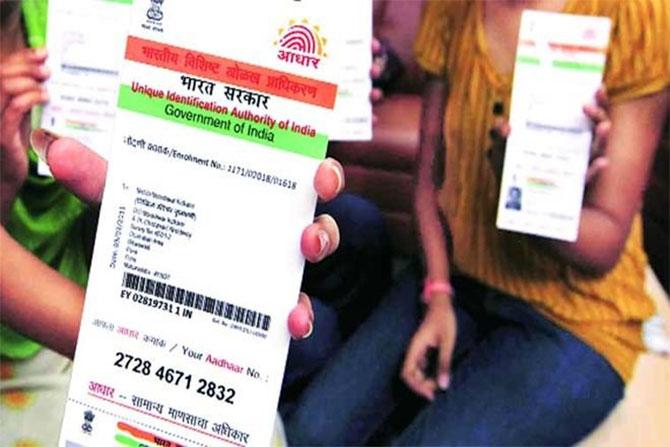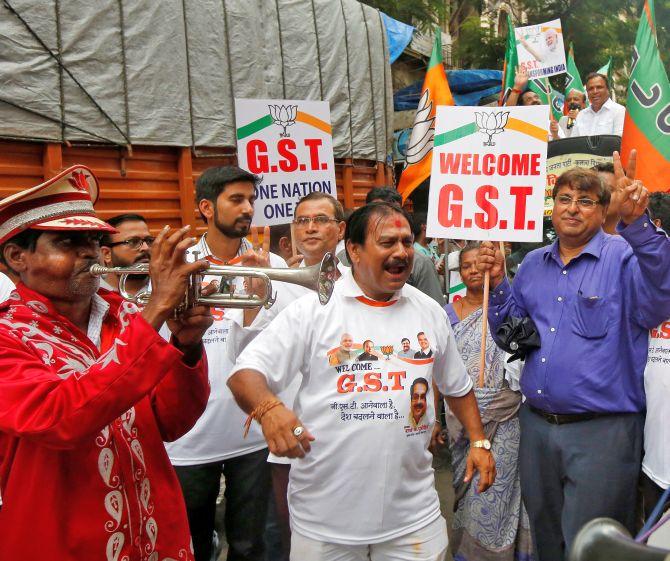Insolvency and Bankruptcy Code, 2016

The IBC is considered one of the biggest success stories in the government's efforts to de-clog the economic system from ill-effects of stressed assets.
Experts believe 2019 was a watershed year in the development of the three-year-old insolvency law.
"The beginning of the year saw the Supreme Court upholding the constitutionality of the IBC in the Swiss Ribbons case. The year saw judicial decisions which required legislative intervention for providing a framework for distribution among creditors in a resolution, which was finally considered and decided by the Supreme Court in the Essar Steel case," says L Viswanathan, partner, Cyril Amarchand Mangaldas.
Also, the government introduced a framework for resolution of financial service providers and initiated implementation of personal insolvency laws for guarantors of corporate debts.
The Finance Act introduced a framework for the RBI-led restructuring of NBFCs and bringing housing finance companies within the regulatory framework of the central bank.
"These measures gave significant impetus to the efforts of the creditors in resolving stressed assets. The year also saw banks achieving significant outcomes by the conclusion of successful resolutions through the IBC, and outside the IBC," says Viswanathan.
Aadhaar Act, 2016

The Act spawned a digital identity ecosystem overnight, making Aadhaar a household name.
Businesses also lapped up Aadhaar for verification of customers, both existing and new.
However, in the absence of data privacy laws in the country, the courts were asked to judge its acceptability as identity proof and safety of user data.
According to Mishi Choudhary, technology lawyer and founder, SFLC.in, Aadhaar's premise -- that the poorest of citizens have the most to gain from its efficiencies: A strong, fast, and inexpensive identity authentication offers improved public services, payments, credit and health care -- is undoubtedly correct.
However, critics point out that Aadhaar's marketing -- that these efficiencies have been achieved through the creation of one big database, containing more than a billion people's biometric identifiers -- was a shoddy effort.
"Sold to the country as a panacea of digital identity that will solve all that has plagued us, the Aadhaar Act legislated a surveillance system that circumvented the Supreme Court judgment in K S Puttaswamy vs Union of India," says Choudhary.
Central GST Act, 2017

The unified multiple central and state-level taxes made it simpler for manufacturers and traders.
Identical tax rates for products across the country made supply chains more efficient and pricing simpler.
"Lower rates in GST compared to erstwhile indirect taxes ensured that there was no inflation as was widely expected before launch," says M S Mani, partner, Deloitte India.
Several GST council meetings demonstrated the benefits of co-operative federalism.
However, what has come under criticism is a manifold increase in compliance for service providers like banks, insurance, and software companies.
Software glitches led to difficulties during the implementation phase for business.
Frequent changes in rates and procedures have led to businesses having to grapple with change on an on-going basis, noted Mani.
NGT Act, 2010
The National Green Tribunal Act, 2010, put in place a dedicated tribunal, comprising both expert and judicial members, to effectively adjudicate matters involving 'substantial questions relating to environment'.
For the first time, hefty fines were imposed on polluters and the statutory authorities were asked to initiate criminal action against directors of polluting industries to ensure compliance with environmental norms.
"While the NGT successfully instilled the fear of law amongst violators, it has faltered on a few occasions, thus creating discontent among businesses for imposing penalty disproportionate to the nature and extent of the violation and actual environmental harm caused," says Nawneet Vibhaw, partner at Khaitan & Co.
Over the decade the NGT had more hits to its credit than misses, say experts.
Sebi Takeover Regulations, 2011

Experts consider Sebi's takeover code in its present form to be on a par with any foreign code governing public mergers and acquisitions.
"The Code is a very granular and technical regulation which does not allow much fiddling with the timelines and procedures involved. The manner of calculation of the thresholds and breaches has not seen much upheaval, except for the increase in thresholds for commencing creeping acquisition and open offers," says Vidisha Krishan, partner, corporate and capital markets, at law firm MV Kini.
Experts, however, point out that the main interpretative area of what amounts to control is where there has been some debate.
"We still grapple with board structures and agreements when it comes to the fine line of balancing affirmative voting rights, veto, protective rights, and the avoidance of an open offer trigger," says Krishnan.
Companies Act, 2013
The Companies Act, 2013, has brought enhanced governance standards and disclosure norms.
Experts say the Act ensured that the functioning of small, closely held public and private companies not get stuck or hampered by unnecessary compliance burden without diluting governance standards.
"It has given importance to self-governance by replacing regulatory approvals with shareholder approvals in many provisions of the Act," says Nagesh Rudrakanthwar, a Mumbai-based company secretary, The Act in its original avatar had criminalised many offences and compliance lapses.
That has gradually been corrected through a series of amendments.
Still, there are certain provisions under the Companies Act, 2013 -- like Significant Beneficial Ownership, CSR, and mandating dematerialisation of shares of private limited companies -- which require further amendments, add experts.
Land Acquisition Act, 2013

The Land Aacquisition Act addressed long-standing asymmetries between the acquisition authorities and affected people through provisions, such as landowner's consent and social impact assessment, say experts.
It ensured transparency, fairness, and limited accountability in land acquisition.
"However, land acquisition has always been a controversial subject in India because of multifarious stakeholders involved and even after six years of the Act, multiple issues remain," says Rahul Arora, partner, Trilegal.
Experts say the Act is suffering from not only implementation loopholes but also ulterior motives of various institutions involved at different stages of acquisition, payment of compensation, and relief and rehabilitation.
"Except for a few successful cases, nothing much has changed the land acquisition scenario in India, which is visible from the plight of various stuck infra projects," says Arora.
Commercial Courts Act, 2015
The most positive impact of the Commercial Courts Act, 2015, has been that it got litigants and courts to start taking about timelines and deadlines seriously, says Alok Prasanna Kumar, senior resident fellow at Vidhi Centre for Legal Policy.
Experts say there has been some level of improvement in the speed of disposal of cases in the courts.
"State governments have been enthusiastic about setting up commercial courts in their states, even though it was initially believed that few cases outside Delhi and Mumbai would be benefited," says Kumar.
However, there was a severe dilution of the Act with the lowering of the jurisdictional threshold from Rs 1 crore to Rs 3 lakh.
"By overburdening courts with any sort of commercial case, ostensibly to try and improve India's low Ease of Doing Business Ranking, the whole idea of commercial courts has been put at jeopardy," Kumar adds.
Black Money Act, 2015

The law was touted to strengthen the hands of the government in its multilateral attack on tax evasion.
"A major victory for war against black money has been the vacation of stay by the apex court on retrospective applicability of the law and expansion of the law to cover non-resident Indians," says Sandeep Jhunjhunwala, director, Nangia Andersen, a tax consultancy firm.
Experts said the move would help recover undisclosed assets stashed abroad in cases where high-profile tax evaders have left the Indian soil.
However, the collection statistics on account of the enforcement of Act have remained dismal when compared to the estimated value of undisclosed assets and income parked offshore, Jhunjhunwala added.
Industrial Relations Code, 2019
Though the Code introduces some new concepts like setting up of 're-skilling fund' for the training of retrenched employees, it appears to be more an act of consolidation rather than simplification, say experts.
The code offers some relief to employers against nuisances of strikes -- referred to as 'mass leave'.
Now, a strike can only be called with the support of 75% workers and upon a 14-day notice, says Raunak Singh, founding partner, Avitr Legal.
Experts note that seeking government approval in cases of retrenchment or layoff of workmen and closure of undertakings has been one of the key challenges being faced by employers in the manufacturing sector.
The Code fails to address the issue as it retains the threshold of 100 workers, says Singh.
However, the government has been allowed the flexibility to revise the threshold.











